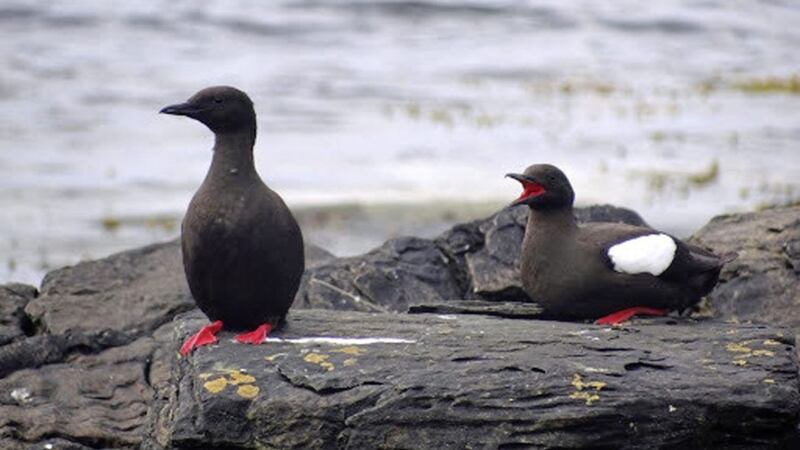A REQUEST from my sister-in-law in Newcastle, Co Down, to identify a photographed bird she forwarded, brought to mind the Julie Gold song From a Distance, first recorded by Nancy Griffith in 1987 – my preferred version – and later by Bette Midler in 1990.
Gold said her song is about the difference between how things appear to be and how they really are, but that people will interpret the song in their own way. The bird in question, a black guillemot, was sitting on boulders at the harbour end of town exactly where I'd seen it in previous years, along with diving gannets out in the bay, on treasured evening walks there.
Strange now looking at it from a distance and stranger still how so many are currently living their lives at a distance from family, friends and colleagues, wishing they could be more fully present to each other, yearning for some small piece of normality.
The song's opening line, "From a distance the world looks blue and green" also struck me as pertinent now, with recent satellite imagery collected by the European Space Agency (ESA) showing air pollution levels have significantly dropped across Europe and China since the worldwide industrial lockdown. ESA images released on Thursday April 16 revealed a 45 to 50 per cent drop in nitrogen dioxide levels across Europe, which make the world look significantly cleaner from a distance.
Cepphus gryllle is a member of the auk family which includes the Puffin and Razorbill, and comes to land during the breeding season, where it nests in loose colonies amongst boulders at the base of cliffs or in rock crevices, often near piers. In summer, the black guillemot is black all over, with a large white oval patch on each wing, but in winter it turns white with black barring on its back and wings, while throughout the year the bird retains distinctive bright red legs and a red gape. The larger common guillemot breeds in sizeable colonies at much higher high densities on cliffs and sea stacks.
In Irish, 'foracha dhubh' translates as 'black guillemot', whereas 'guillemot' itself is believed to be of French origin and derived from 'Guillaume', meaning 'little William'. The folk name 'tystie' of Norse origin, meaning 'the bird that whistles' is commonly used for the bird in the Shetland islands, while Swainson (1886) notes it was named 'parrot' in Roundstone, Co Galway. There are significant breeding groups of black guillemots around Ireland, with a well-established population at Bangor harbour, where birds have nested since 1911.
It is to the peoples of the north Atlantic, eastern North American coasts and Scandinavia, however, where most folk ornithology on the bird is found. Much has been written on how the birds have provided food, fuel and raw material for clothing and handicrafts for these coastal dwellers. Danish botanist, Jørgen Landt in his book on the Faroe Islands (1800), wrote of how local hunters captured the young birds.
"The adult black guillemot is seldom killed, but young birds are sought because of their fatness and tastieness", while Svanberg and Ægisson in their paper Black Guillemot in North European Folk Ornithology (2006) write "certainly, from the early 17th century until the first half of the 20th century, black guillemots were taken for food; nestlings collected and eggs taken from nests", around eastern Canada, Alaska and along British coasts. I have no doubt the bird was also an important food source for island and coastal communities around Ireland.
As we take our first tentative steps out of isolation, stay safe and begin to enjoy those things which, for some time, have been so distant.









